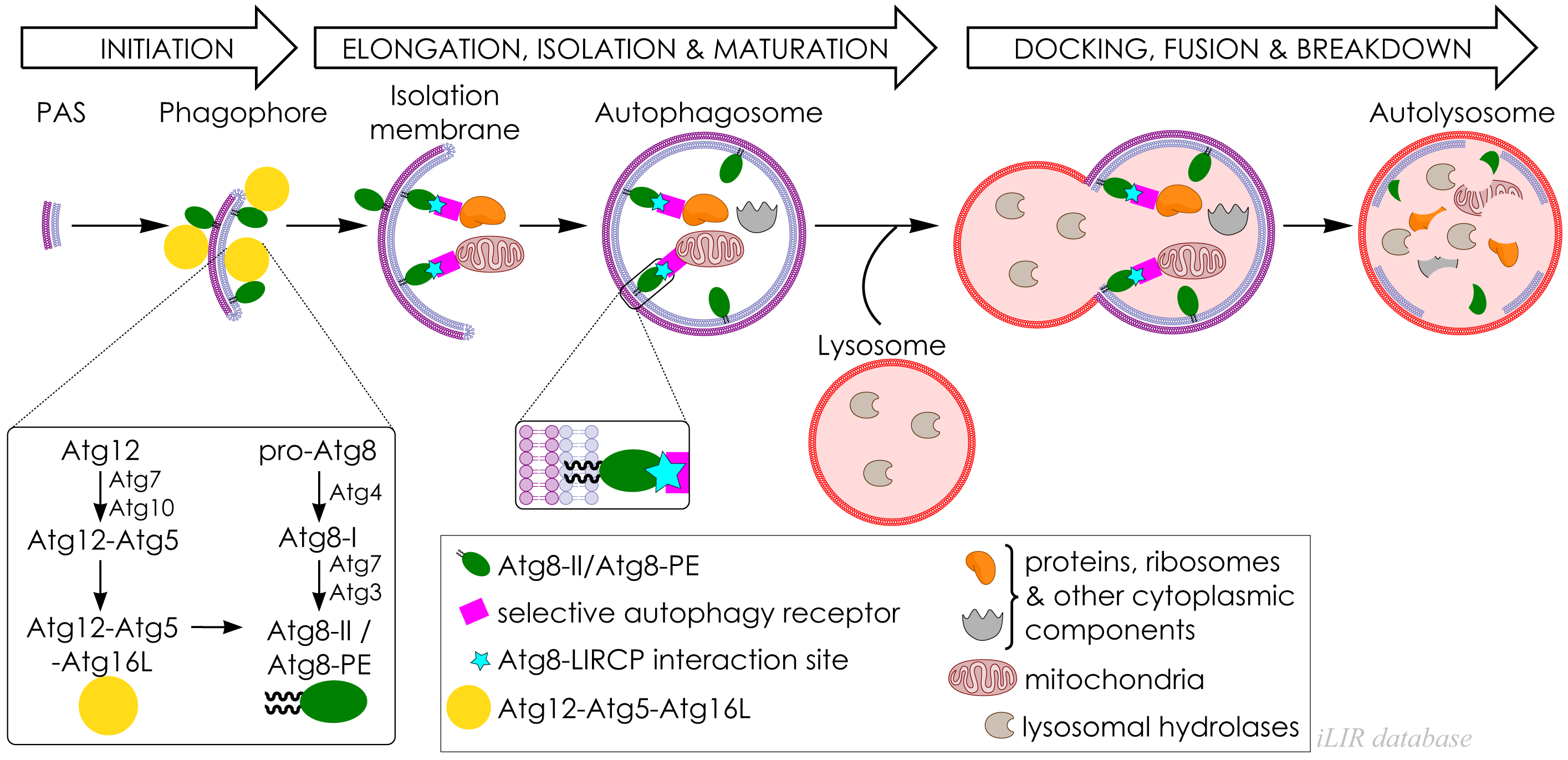Autophagy is the intracellular process of degradation of a wide range of cytoplasmic components. Although it was initially believed that autophagy occurs randomly inside the cell, during the last years there is growing evidence that sequestration and degradation of cytoplasmic material by autophagy can be selective. Selective autophagy refers to the targeting and degradation of specific substrates such as organelles, bacteria or protein aggregates (referred as 'cargos'). The specific targeting of those cytoplasmic components requires the presence of selective receptors able to bind the cargos and transfer them to the autophagosome. One common feature of these receptors is their ability to interact with Atg8-family proteins, the best-studied proteins of the core autophagy machinery anchored in the autophagosomal membrane.

Additionally to selective autophagy receptors, it has been shown that Atg8-family proteins can interact with a variety of proteins required for the progression of the autophagic process, vesicular transport, or proteins which are themselves subject to autophagic degradation. All these Atg8-family interacting proteins contain a short linear sequence called LIR (LC3-interacting region) motif which mediates their interaction with Atg8-family proteins. These proteins are referred as LIRCPs (LIR motif-containing proteins).
Even though a lot of effort has been put into the identification of new Atg8-family-interacting proteins, a number of them remain to be discovered. The iLIR database provides to the scientific community the list of the proteins encoded by the genome of different model organisms which have at least one putative functional LIR motif. This database is combined with the iLIR server, an easy bioinformatics tools aiming to help researchers for assessing whether a specific protein of interest has a potential functional LIR motif based solely on its amino acid sequence.